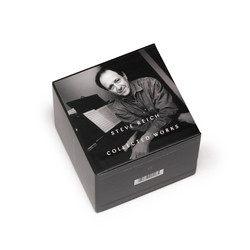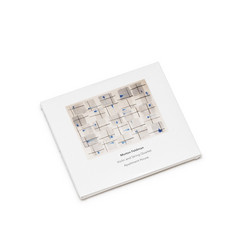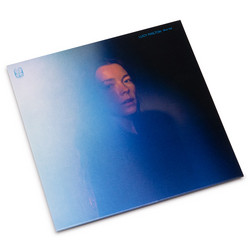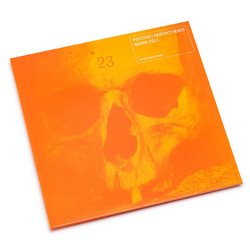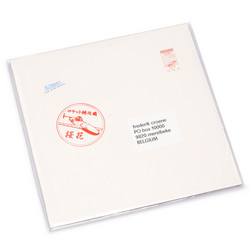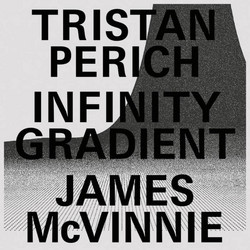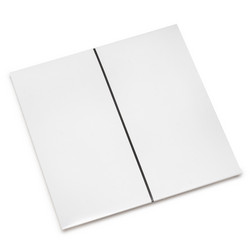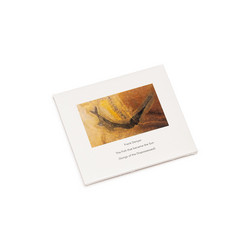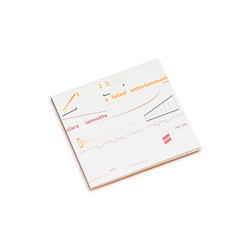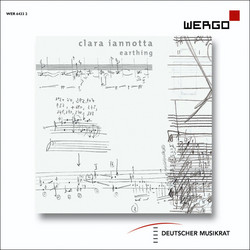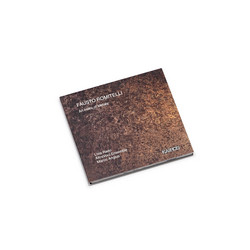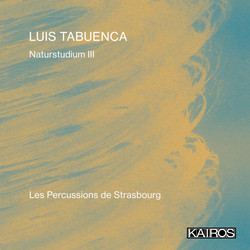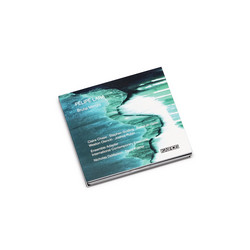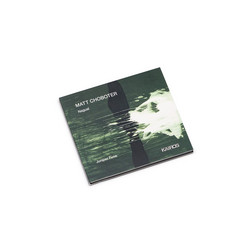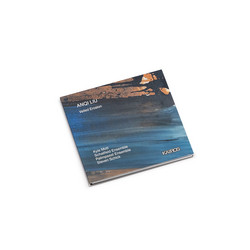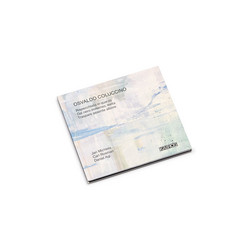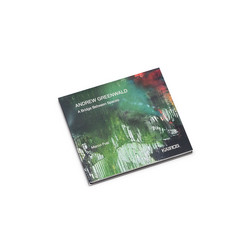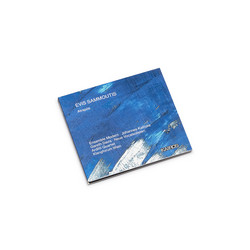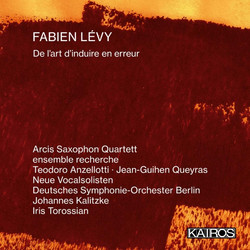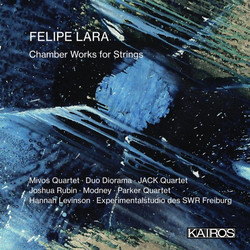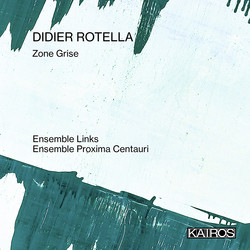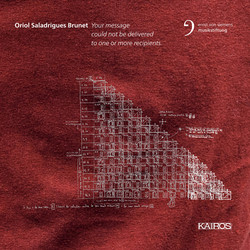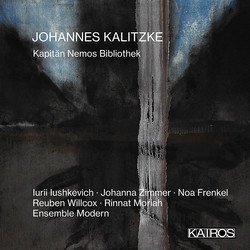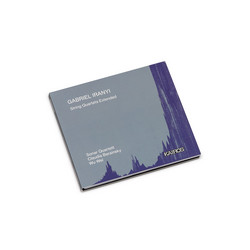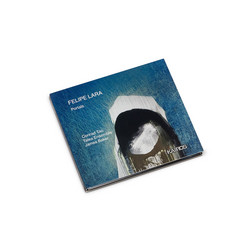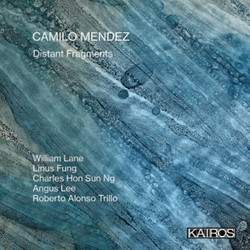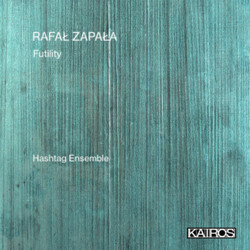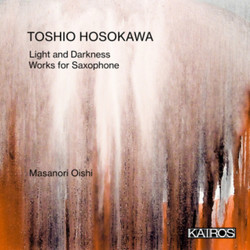At first I found it impossible to organise my thoughts about this disc. I listened in bed to Moult through headphones; it seemed an entirely different beast through speakers. The two pieces in the middle are quieter, and more consistent in their impacts with headphones or not. Listening to them for the fourth or fifth time under the duvet one really begins to perceive the extraordinary subtlety of Clara Iannotta’s schemes. They provide the kind of measured sensory stimulation which is exquisite in keeping one awake in a good way. I certainly recognised these sounds as music which would demand wholehearted commitment from even the most sympathetic listener, yet in the final analysis I find Clara Iannotta to be a startling, singular voice.
Helmut Lachenmann is an obvious touchstone; but Iannotta takes detail, intricacy and instrumental (and synthetic) potential to another level. And yet for all their complexity, there is something disarmingly organic about each of these intriguing scores. A disc of her invigorating music for string quartet was released by Wergo last year (review). Over the years that pioneering label has released an extensive series of discs devoted to an unheralded figure whose work might constitute an unlikely yet uncanny comparison point for any adventurous souls considering approaching Iannotta’s unusual aesthetic for the first time; it is perhaps telling that Walter Tilgner (b 1934) is not a composer but a biologist, photographer and sound recordist. Tilgner’s remarkable ‘Natural Sound’ series of field recordings have documented the avian ecology of the German landscape for almost four decades. Albums such as Waldkonzert (SM 9001-50), Vogelhochzeit (SM 9004-2) and especially the magnificent Winter am Bodensee (SM 9012-2) have become favourite essential late-night listening fodder for me. The most uplifting feature of these discs is their completely unrefined authenticity – post-recording studio wizardry is anathema to Tilgner whose work thrives on the conceit that flow cannot be altered by the unpredictable, that anything can (and will) happen on the surface and shore of Lake Konstanz (and elsewhere) and in so doing will inevitably become an essential part of the fabric. Each of Iannotta’s pieces on this album proceed and evolve in this way. Her extraordinary ear and obsessive attention to detail at the most granular level render her work profoundly compelling. But be warned: easy listening this is not, goodwill and perseverance are pre-requisites for the curious listener.
Take MOULT, the work on this disc which requires the largest ensemble (the WDR SO in this case). What ARE those high-pitched sounds? Are they blown or bowed? Or both, or neither? Does it matter if it’s a blackbird or a bunting, an owl or a harrier? It just is, and because it’s fascinating for the brain to try and work it out the ear is invariably drawn to the single sound. Iannotta constructs this music with fastidious care; each tiny detail is essential to its design and painstakingly incorporated into its arc. MOULT is beautifully proportioned and ideally paced, the coloristic and textural variety on display seems unlimited. Yet paradoxically it evolves so organically and with such inevitability that the meticulous calculation and draughtsmanship behind it seem like an illusion, a trick. That Tilgner comparison is not misplaced. This is contemporary art of the first rank, music which invigorates and cleanses on its own terms. One might say it wipes the cobwebs away, not least since its title alludes specifically to the moulting of spiders, who shed their exoskeletons in an act of physical renewal, a process the composer seeks to reflect upon with a broadly traditional orchestra at her disposal. At certain points in the score, the conventionality of the orchestral sounds produced actually shock the ear, given that the peculiar sonic syntheses which precede and follow them seem to be the norm. Whilst MOULT might represent new music at its most bracing it’s far from ugly. Not a nanosecond is wasted. The WDR orchestra play with what seems like incredible precision and evident conviction. The superb recording leaves nothing behind in the auditorium.
The following item is equally compelling. For paw-marks in wet cement, Iannotta introduces three discrete sound sources; a piano, a pair of percussionists and an amplified ensemble. Whilst an alert listener might be able to disentangle these elements after a few listens, paw-marks at no stage seems like a concertante work. The textures that emerge, whether metallic, rumbling, resonant or strummed are predominantly gentle, the pace generally languid. Wilhelm Latchouma’s morse piano taps punctuate an ethereal string halo; unpredictable roaring sounds yield to twittering agitations; rapid popping sounds and eerie creakings foster an atmosphere redolent of a walk in the woods at dusk. The picturesque, haunting title (as with the two subsequent works on this disc) is drawn from the writings of the late Irish poet and artist Dorothy Molloy; Markus Böggemann’s excellent note (idiomatically translated by Robert Jacobs) explains how the simultaneity of presence and absence implied by the phrase manifests itself in the dramatic splinters of abrasive instrumental texture which occasionally intrude upon Iannotta’s soft surfaces. The conclusion is most striking – that insistent piano note over a distant hum. A micromanaged imitation of nature which ceases abruptly at that precise moment between what is and what was.
The processional spirit implied by the title of Iannotta’s amplified ensemble piece Troglodyte Angels Clank By certainly informs its first couple of minutes, evoking as it does images of a line of metallic ghosts navigating a network of subterranean paths and tracks, until they happen upon a bustling community of fellow travellers. At this point the ear is drawn to a distant high tone which gradually splinters into gentle, almost comforting vibrations. The flow of the piece subsequently wavers between these contrasting elements, occasionally interrupted by momentary episodic cutaways. Iannotta’s blending of conventional instrumental sound and novel, synthetic manipulation is again masterly. In due course Troglodyte Angels Clank By turns into a riveting collision of ethereal colour and granular fidgeting, producing a detailed sonic backdrop which will absolutely rewards the sympathetic listener’s undiluted concentration. The detail really creeps up on one as the piece becomes familiar; I found it mesmerising.
Rawer in texture yet subtler in its impact. dead wasps in the jam-jar (ii) is one of a number of manifestations of a piece which has been reworked for various instrumental combinations. (One of these appears on the Wergo quartet disc I mentioned earlier, as does Earthings, another brilliant work which also references Iannotta’s dead wasps) Bach’s B minor Partita for solo violin unexpectedly provides some kind of structural template for the work (the original version of dead wasps was conceived as a recital pairing for the Bach) but I was quite unable to detect this and I suspect its presence under-the-radar will elude even the most alert Bach expert. This is of no cosequence to the rest of us, however. Iannotta’s knotty textures seems to constitute a greatly slowed down yet literal impression of some unspecified natural process, and I suspect the majority of listeners will (like me) be unable at first to recognise the presence of an (exclusively) string orchestra. The intensification of micro-activity and granulation increases builds steadily; yet by the time dead wasps reaches its conclusion one is left with an indelible impression of interminable slow decay - not unlike the effect of a rusting childrens’ swing swaying in the wind in some post-apocalyptic playgound perhaps, evaporating into the silence of the spheres.
Much as I would like to encourage as many readers as possible to sample this disc I suspect some may find Clara Iannotta’s work just too astringent. Yet I have always found the most durable music requires considerable reserves of patience and commitment on the part of the listener and whilst this issue reinforces that view, Iannotta projects a singular vision which she executes with formal precision and unlimited timbral imagination. The recordings, made in four different locations seem absolutely top-notch; all the performances exude tangible enthusiasm on the part of the players. For me this Kairos disc is up there with their triumphant recent monographs dedicated to Arturo Fuentes and Timothy McCormack.
Richard Hanlon

